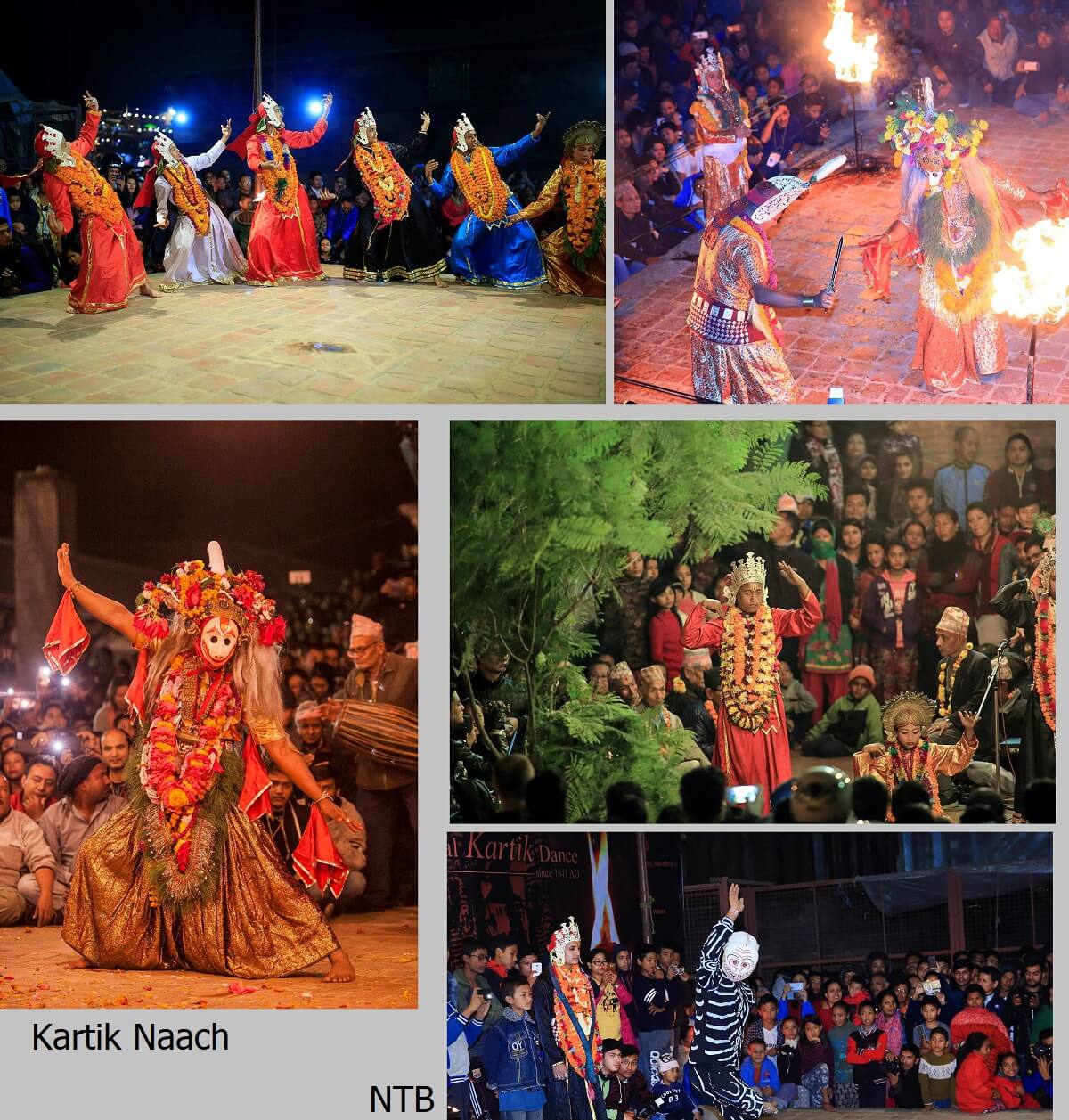
Kartik Naach: Ancient Cultural Dance Tradition in Patan
According to Kiran Chitrakar, the Kartik Naach Preservation Committee chairperson, the ancient tradition of Kartik Naach will begin at the Kartik Dabali in Patan Durbar Square.
This dance is linked to 17 stories of Lord Vishnu and will feature a different tale each day until Kartik 30. The tradition, started by Malla King Siddhi Narasimha Malla, has been held annually in the month of Kartik, as Chitrakar explained, with the belief that it promotes the welfare of the country and its people.
Historical Significance and Structure of Kartik Naach
According to historical records, Kartik Naach began in Nepal Sambat 761 (B.S. 1697). Its uniqueness lies in the daily portrayal of a different story through dance. King Siddhi Narasimha Malla initiated this dance to alleviate fear among the people of Lalitpur. The creators and founders of this tradition were Siddhi Narasimha’s teacher, Pandit Haribansh Upadhyaya, and his spiritual guide, Vishwanath Upadhyaya.
Initially, Kartik Naach lasted for five days. Still, King Siddhi Narasimha’s son, Srinivas Malla, extended it to 15 days by adding plays like "Bathah Pyakhan" (Folk Drama), "Sudama Pyakhan," and "Surdas Pyakhan."
Chitrakar noted that the dance has been performed for over 10 days due to financial constraints and limited artist availability. Despite this, Kartik Naach remains essential to Nepal's intangible heritage and traditional culture, keeping its legacy alive.
Religious and Cultural Importance of Kartik Naach
Kartik Naach has religious and tantric significance and is regarded as an inclusive dance within the Newar community, fostering ethnic harmony. Historically, the dialogues in Kartik Naach were delivered in Maithili, but they have recently been translated into Nepal Bhasa for more exhaustive comprehension within the Newar community.
According to Sanjay Sharma Rajopadhyay, coordinator of the Kartik Naach Promotion Committee, Kartik Naach is recognized as one of the world’s longest theatrical festivals, originally spanning 27 days. However, since 2006, it has been condensed to 10 days. After the revolution of B.S. 2007, it was shortened to a few days and further reduced to two days from B.S. 2008 to B.S. 2037, showing only the Varaha and Narasimha incarnations. From B.S. 2038 to B.S. 2069, it was extended to eight days each year and later to 10 days from B.S. 2070.
Due to the COVID-19 pandemic, the festival was limited to just two days in B.S. 2077. This year, it will last for ten days. The full 27-day performance hasn't been conducted since 2006, requiring a year of preparation and extensive practice.
Challenges in Sustaining Kartik Naach
Rajopadhyay highlighted that performing Kartik Naach on a large scale faces financial challenges. A minimum of 20 artists is required for each dance, and although they aim to preserve the tradition, the current resources are insufficient to extend the festival to a whole month. With external funding, however, a 27-day performance could be feasible.
He also pointed out that artists cannot devote their time professionally due to a lack of fair compensation, leading many to migrate abroad. The younger generation faces language barriers, and government support remains insufficient, creating additional obstacles to preserving this tradition.
Steps Towards Preservation and Sustainability
Chairman Kiran Chitrakar stated that the Kartik Naach Preservation Committee plans to establish a fund of Rs. 100 million to sustain this tradition, support artists professionally, and provide language training to younger generations. The committee also aims to offer scholarships and health insurance for artists.
Additional Information about Kartik Naach:
1. Kartik Naach originated in the Malla era, started by King Siddhi Narsingh Malla in B.S. 1697.
2. This traditional dance festival occurs at Kartik Dabali near Patan Durbar Square, Lalitpur.
3. Originally, Kartik Naach lasted an entire month but is now limited to 10 days.
4. It is performed annually in the month of Kartik, giving the festival its name.
5. The dance was initiated to ensure the welfare of the people and the country.
6. It is based on the story of Lord Vishnu’s Narasimha avatar, among other divine tales.
7. Each day features a different story, portraying various incarnations of Vishnu.
8. Traditional musical instruments like ponga, khin, taa, and jhyali accompany the dance.
9. The festival includes religious and tantric elements, highlighting its spiritual significance.
10. Initially, the dance featured Krishna Leela, later expanding to include Varaha and Narasimha avatars.
11. King Srinivasa Malla extended the festival to 15 days, adding moral folk dramas in B.S. 1730.
12. King Yoganarendra Malla extended it to a month, incorporating classical dances like Ushaharan.
13. The dance halted briefly during the B.S. 2007 revolution, resuming in a shortened form afterward.
14. From B.S. 2008 to B.S. 2037, the dance was limited to two days.
15. The Kartik Naach Management Committee was formed in B.S. 2038, reinstating an eight-day celebration.
16. It is regarded as one of Nepal's longest-running theatrical festivals.
17. The festival raises social awareness through dramatic plays, particularly the Mahamurkh drama.
18. In recent years, the festival has been performed from Kartik Shukla Shashti to Kartik Shukla Trayodashi.
19. Bathah Naach, part of the festival, depicts the story of Brahma, Vishnu, and Mahadev visiting Earth in human form.
20. The Bathah Naach mask is symbolic and believed to be crafted from human skin.
21. Devi dance, Varaha play, and war art performances hold unique religious significance.
22. Hymns and devotional songs during the dance enhance its religious atmosphere.
23. The festival symbolizes Patan’s historical and cultural heritage, preserving Malla-era traditions.
24. Kartik Naach showcases ancient Nepal's lifestyle, beliefs, and cultural practices.
25. The Preservation Committee aims to sustain Kartik Naach through funding, artist training, and support for younger generations.
Lalitpur Festival




